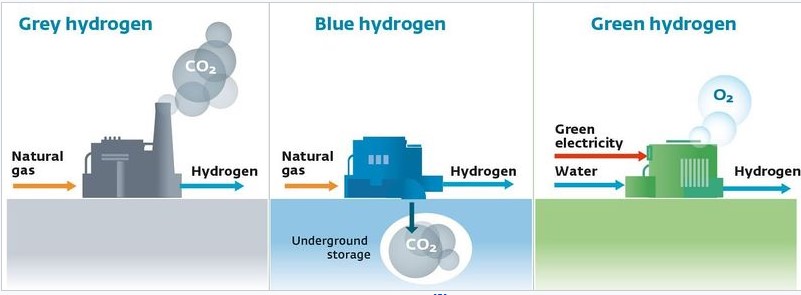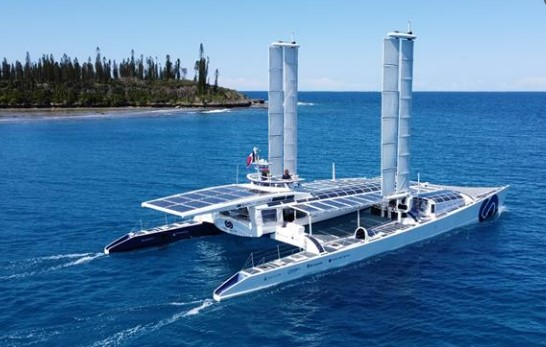![[BMCS Magazine -Nongor 2023] Hydrogen – the lightest element with weighty potential! – Nazmul Hasan Bhuiyan (28N)](http://bdmariners.org/wp-content/uploads/2023/09/28-Nazmul-5-1.jpg)
[BMCS Magazine -Nongor 2023] Hydrogen – the lightest element with weighty potential! – Nazmul Hasan Bhuiyan (28N)
The writer is a Master Mariner with extensive sea going experience in carriage of cryogenic cargoes and shore-based experience in oil and gas industry.
Disclaimer: The article is aimed to raise a general awareness on the introduction of hydrogen as fuel. The information was collated from publicly available websites on the internet and referenced in the Bibliography. Neither the author nor any organization related in any manner with the author assumes any responsibility or liability for any errors or omissions in the content of this article, or for the results obtained from the use of this information.
Hydrogen is the most abundant element in the universe, about 90% of all atoms in existence, and the first in the periodic table. In 1783, this element was named ‘hydro-gen’, meaning ‘water former’ as it generates only water when burned. Reversely Water can be split into hydrogen and oxygen through a basic chemical process we all know as Electrolysis. This also produces energy and can be used as fuel cell.
This knowledge is nothing new, in 1839 Sir William Robert Grove was successful to combine hydrogen and oxygen which produced electricity and water, possibly the first ever fuel cell. Poul la Cour, a Danish scientist used windmill powered Electrolysis to supply hydrogen to power lamps for Askov Folk High School between 1895 and 1902. The efforts continued and in 1959 engineer Francis T Bacon demonstrated a five-kilowatt fuel cell that could power a welding machine. In the same year, Harry Karl Ihrig demonstrated a 20-horsepower tractor, and later in 1960 general motor built a hydrogen fuel cell powered van. Then what stopped the progressive innovation of hydrogen fuel cell? There was only one reason, the fossil fuel was a much cheaper and easily available source for energy.
The world has finally realised that the use of fossil fuel-based energy is emitting large amount of greenhouse gases to the earth’s atmosphere, directly contributing to the rise of global temperature. Among all the greenhouse gases, carbon dioxide is the most released gas particularly from burning fossil fuels to satisfy the ever-increasing needs for energy. The Paris Agreement is a legally binding international treaty on climate change. It was adopted by 196 Parties in Paris, on 12 December 2015 and entered into force on 4 November 2016. Its goal is to limit global warming to well below 2⁰C compared to pre-industrial levels. This is not achievable overnight and giving up fossil fuel is not easy. Most participant countries are aiming to achieve net zero by 2050. The goal of net-zero means that the flow of greenhouse gases into the atmosphere will be at the same as they are removed and/or captured at the source. This, no doubt is an ambitious aim. And hydrogen could be a suitable alternative fuel to achieve this target.
Hydrogen does not exist by itself. Today, most of the hydrogen is produced from fossil fuel, mainly natural gas, and coal, some from oil, through a process called ‘steam reformation’ which releases carbon dioxide. This obviously defies the goal of reducing greenhouse gas emission. This is known as ‘grey’ hydrogen. When the released carbon dioxide is captured at the source and stored is a safe way, then it is named as ‘blue hydrogen’. The enthusiasm is around so called ‘green hydrogen’, produced by electrolysis process using renewable energy source e.g., solar and wind power. This is much more expensive at this stage but as its market and technology evolve, it is expected to become most preferred process to produce hydrogen.

Hydrogen acts as a chemical energy carrier, it stores three times more energy compared to the same mass of conventional petrol. Hydrogen is being used as rocket fuel in the space industry. It has the potential to replace the fuels for many segments like transportation by sea, land and even air. The ongoing research and development efforts will soon facilitate use of hydrogen as fuel, economically and efficiently.
Energy Observer is a yacht, capable of producing its own hydrogen from sea water with her 120 square meter solar panels, 2 vertical axis wind turbines, and 1 intelligent traction kite.

Read the full publication here: BMCS Magazine Nongor 2023











Recent Comments